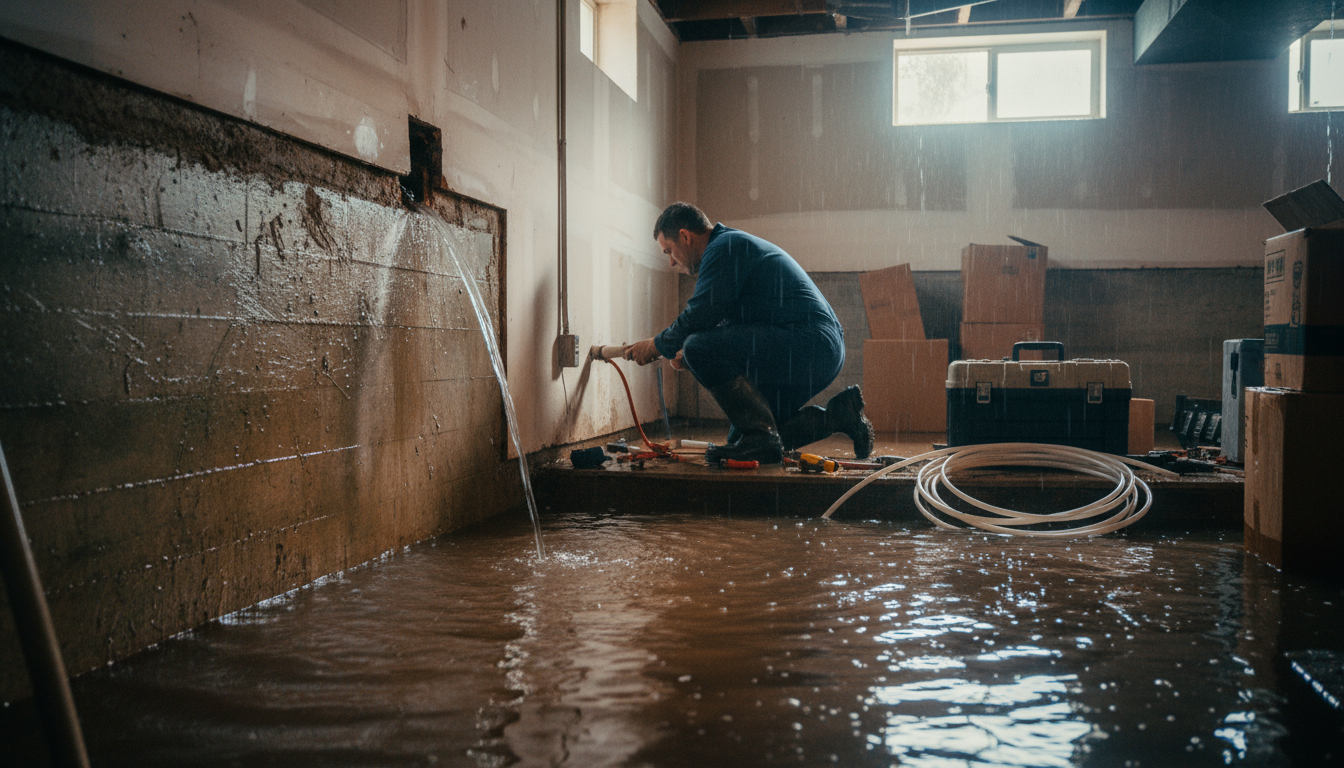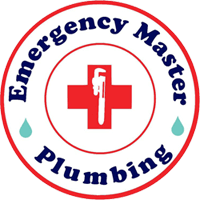

Plumbing issues can strike without warning, turning a peaceful home into a chaotic mess. Whether it’s a sudden burst pipe flooding your kitchen or a stubborn clog backing up your bathroom, knowing emergency plumbing tips can save you time, money, and stress. As a homeowner, you’re not expected to be a professional plumber, but basic knowledge empowers you to act quickly and minimize damage. In this guide, we’ll explore common plumbing emergencies, step-by-step solutions, and prevention strategies to keep your home running smoothly. By the end, you’ll feel more confident handling these situations—or knowing when to seek expert help.
Understanding emergency plumbing starts with recognizing the signs early. Water damage from leaks can lead to mold growth, structural issues, and skyrocketing repair bills if ignored. According to plumbing industry reports, over 10,000 homes experience water damage daily in the U.S. alone. Armed with these emergency plumbing tips, you can protect your property and avoid costly surprises. Let’s dive into the essentials.
Common Plumbing Emergencies and How to Spot Them
Plumbing problems often escalate fast, so identifying them promptly is key. Here are the most frequent emergencies homeowners face, along with warning signs to watch for.
Leaking or Burst Pipes
One of the scariest plumbing emergencies is a burst pipe, especially during freezing winters or hot Arizona summers when pipes expand and contract. Look for puddles under sinks, damp spots on walls or ceilings, or a sudden drop in water pressure. If you hear dripping or hissing sounds from walls, that’s a red flag.

Why does this happen? Aging pipes, high water pressure, or physical damage from renovations can weaken them over time. In regions like Peoria, AZ, where temperature swings are common, corrosion from hard water accelerates the issue. Spotting a leak early prevents it from becoming a flood—turn off the main water supply immediately if you suspect a burst.
Clogged Drains and Toilets
Clogged drains top the list of everyday plumbing woes. Symptoms include slow drainage, gurgling sounds, or water backing up into sinks, tubs, or toilets. Kitchen sinks often clog from grease and food scraps, while bathroom drains suffer from hair and soap buildup.
In multi-person households, overuse without proper maintenance compounds the problem. If multiple fixtures are affected, it could signal a main sewer line blockage, which requires professional intervention. Ignoring clogs can lead to overflows, contaminating your home with wastewater.
Water Heater Failures
Your water heater quietly works behind the scenes until it doesn’t. Emergency signs include no hot water, strange noises like rumbling or popping, or discolored water. Leaks around the base or a rusty tank indicate imminent failure.
Sediment buildup in hard water areas like Arizona shortens water heater lifespans to 8-12 years. A malfunctioning unit not only disrupts daily routines but can also pose scalding risks or flooding if it bursts.
Low Water Pressure or Noisy Pipes
Sudden low pressure might stem from a hidden leak or mineral deposits in pipes. Noisy pipes, often called “water hammer,” occur when faucets shut off abruptly, causing bangs. These issues signal air trapped in lines or loose fittings, potentially leading to bigger breaks.
Regular checks during routine maintenance can catch these before they become emergencies. For instance, installing pressure regulators helps in homes with municipal water systems exceeding 80 PSI.
Immediate Steps to Take During a Plumbing Emergency
When a plumbing crisis hits, stay calm and follow these emergency plumbing tips to contain the damage. Time is critical—act within minutes to avoid escalation.
Shut Off the Water Supply
The first rule in any water-related emergency: Locate and turn off your main water shutoff valve. It’s usually near the water meter, in the basement, or by the street. For specific fixtures, use under-sink valves. This stops the flow instantly, preventing further flooding from leaks or bursts.
Pro tip: Label your shutoff valves and test them annually. In a panic, fumbling for tools wastes precious time. Once off, open faucets to drain residual water and relieve pressure.
Contain the Mess
Grab towels, buckets, and tarps to soak up standing water. For floods, use a wet-dry vacuum if available. Avoid electrical outlets to prevent shocks, and move valuables to higher ground.
If sewage is involved from a clog, wear gloves and avoid contact—it’s hazardous. Ventilate the area to reduce mold risk, and document the damage with photos for insurance claims.
Assess and Isolate the Problem
Determine if it’s isolated (e.g., one faucet) or widespread. For clogs, avoid plunging toilets with standing water to prevent overflow. Instead, bail out excess first. In water heater issues, switch to the pilot setting if it’s gas-powered and leaking.
These steps buy you time to call for help without worsening the situation. Remember, quick action can reduce repair costs by up to 50%, per industry estimates.
Safe DIY Fixes for Minor Plumbing Emergencies
Not every issue needs a pro right away. These emergency plumbing tips focus on simple, safe DIY solutions for minor problems, but always prioritize safety—stop if you’re unsure.
Clearing Minor Clogs
Start with a plunger: Cover the drain fully and plunge vigorously for 15-20 seconds. For sinks, use a drain snake or baking soda/vinegar mix—pour 1/2 cup baking soda followed by 1/2 cup vinegar, let it fizz for 15 minutes, then flush with hot water.
Avoid chemical drain cleaners; they corrode pipes and harm the environment. For toilets, a flange plunger works best. If it persists after two attempts, call a plumber to avoid damaging seals.
Fixing Leaky Faucets
Dripping faucets waste up to 3,000 gallons of water yearly per household. Tighten connections first with a wrench. If that fails, replace the washer or cartridge—most hardware stores carry universal kits for under $10.
Turn off water, disassemble the faucet, and swap parts. This fix takes 30 minutes and prevents escalation to full leaks. For compression faucets common in older homes, focus on O-rings.
Bleeding Air from Pipes
For noisy pipes, shut off water, open all faucets, then slowly turn it back on. Install water hammer arrestors if bangs continue—they cushion the shock.
These DIYs empower homeowners but aren’t substitutes for professional diagnosis. Over-tightening or using wrong tools can cause cracks.
When to Call a Professional Plumber
Knowing your limits is crucial in emergency plumbing. DIY works for drips, but call experts for:
- Persistent clogs affecting multiple drains.
- Visible pipe damage or bursts.
- No hot water or electrical issues with heaters.
- Sewage backups or foul odors.
Professionals use tools like camera inspections to pinpoint issues without invasive digging. In Arizona’s arid climate, they also address unique challenges like scale buildup from minerals.
Delaying help risks health hazards, like bacterial growth from sewage, or voided warranties on appliances. Expect pros to arrive equipped for safe, efficient repairs.
Preventing Plumbing Emergencies: Long-Term Strategies
Prevention beats cure. Implement these emergency plumbing tips into your routine to avoid crises altogether.
Regular Maintenance Habits
Schedule annual inspections, especially for pipes over 20 years old. Flush water heaters every six months to remove sediment—turn off power, attach a hose to the drain valve, and flush until clear.
Clean strainers in drains weekly and avoid pouring grease or flushing non-biodegradable items like wipes.
Upgrades for Durability
Install low-flow fixtures to reduce pressure strain. In hard water areas, water softeners prevent mineral deposits. Insulate exposed pipes against temperature extremes.
Smart leak detectors, starting at $50, alert your phone to moisture, giving early warnings.
Seasonal Preparations
In winter, insulate pipes and drip faucets during freezes. Summer heat in AZ demands checking for expansion cracks. Educate family on shutoff locations for peace of mind.
By staying proactive, you extend your plumbing system’s life and cut emergency risks by 70%, based on plumbing association data.
Conclusion: Stay Prepared and Protected
Mastering emergency plumbing tips equips you to handle home hiccups confidently, from spotting leaks to simple fixes and knowing when to call in reinforcements. Prevention through maintenance keeps issues at bay, saving you headaches and dollars. Remember, a well-maintained system ensures your home remains a safe haven.
For reliable, fast-response plumbing services in Peoria, AZ, trust Emergency Master Plumbing & Air. Our certified team tackles emergencies 24/7 with expertise you can count on. Call us today at 623-584-4706 for immediate help or routine checkups—your peace of mind is our priority.
